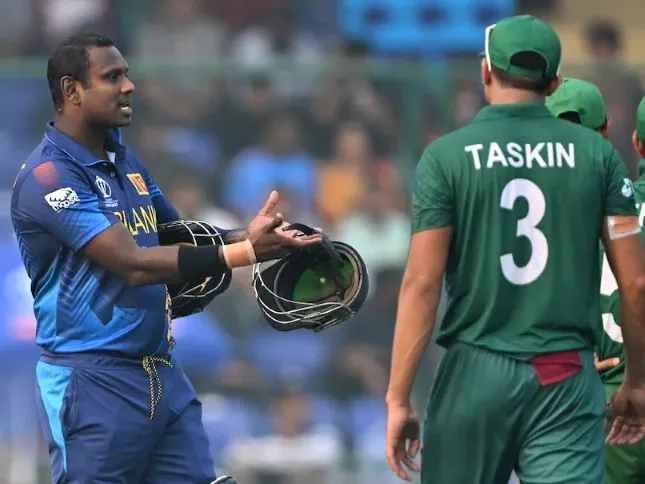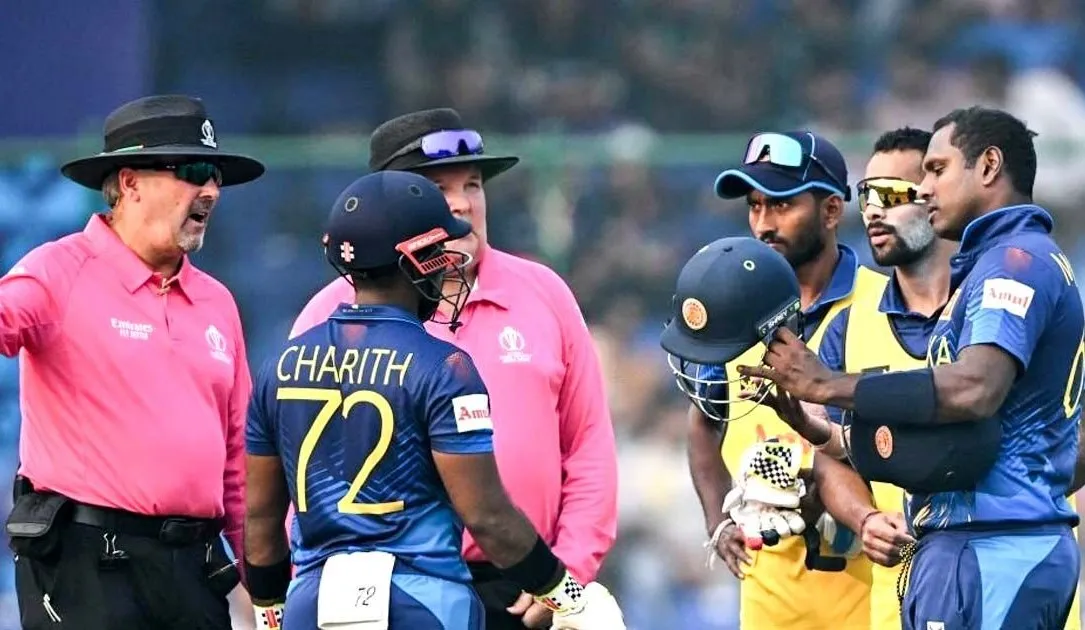Table of Contents
ToggleTimed out in Cricket: Those important 2 minutes
Today at Arun Jaitley Cricket Stadium, Delhi, in the 38th Match between Sri Lanka and Bangladesh something happened, which was never happened in international cricket history. There are few instances in first class cricket and Indian Cricketer Vinod Kambali and a first class cricketer Hemulal Yadav was also given timed out in 1st class cricket match, but this never happened in the history of ODIs.
In 25th over when Samarwikcrama was out the next batsman was Angelo Mathews. He came to crease but before taking stance to face the 1st ball, he noticed fault in his helmet and signalled to dugout for another helmet. Before he could reach to his crease Bangladesh players appealed for timed out and umpire has to follow the book of instructions and declared Mathews out. After this instance a huge debate is everywhere regarding this rule, role of umpire, spirit of cricket etc.
Which is done, that is now a part of history and will be discussed at all the platforms. Now let’s know about the term “TIMED OUT”, in further details.
Timed out in Cricket – Understanding the Rare Rule
Introduction
In the world of cricket, there are numerous rules and regulations governing the game. While many of these are well-known, there are some that are rather obscure and infrequently invoked. One such rule that often leaves cricket enthusiasts puzzled is the “timed out” rule. This article will delve into the intricacies of this uncommon occurrence in cricket, providing a comprehensive understanding of when and how it can come into play.
What is “Timed Out”?
Cricket enthusiasts might have heard of batsmen being dismissed in various ways – bowled, caught, LBW, or run out. However, “timed out” is a lesser-known method of dismissal in cricket. In essence, a batsman can be declared “timed out” if they take an excessive amount of time to get ready to face the next delivery.
The Duration
The rule specifies that a batsman must be ready to face the next ball within tw0 minutes of the previous ball being declared dead. If the batsman is not prepared to face the next delivery within this time frame, they can be given out as “timed out.”
The Role of the Umpire
The decision to declare a batsman “timed out” lies in the hands of the on-field umpire. The umpire monitors the time between deliveries and determines if the batsman is deliberately delaying the game. If they feel that the batsman is intentionally wasting time, they can invoke the “timed out” rule.
Instances of Timed Out
“Timed out” dismissals are exceptionally rare in the history of cricket. This rule is seldom enforced, primarily because it can be challenging to prove that a batsman is intentionally delaying the game. There have been only a handful of instances where a batsman was declared “timed out.” One notable case was when Vinod Kambli, an Indian cricketer, was dismissed in this manner during a domestic cricket match.
The Controversy
The “timed out” rule has been a subject of controversy in the cricketing world. Some argue that it is too subjective and open to interpretation, making it challenging for umpires to apply consistently. Others believe that it is necessary to prevent undue delays in the game.
Conclusion about Timed out in Cricket
In the world of cricket, the “timed out” rule is a rarely invoked, yet intriguing facet of the game. It adds an element of time management to the sport, emphasizing the need for players to keep the game moving at a reasonable pace. While it might not be a common occurrence, understanding the “timed out” rule can provide a deeper appreciation of the intricacies of this beloved sport.
FAQs
Q. Whether a batsman can appeal against a “timed out” decision?
No, once the umpire invokes the “timed out” rule, the decision is final and cannot be appealed.
Q. Is the three-minute rule for getting ready for the next delivery strictly enforced?
While the rule is in place, umpires often use their discretion and are generally lenient unless they suspect intentional time-wasting.
Q. Are there any penalties for the fielding side if a batsman is declared “timed out”?
No, there are no penalties for the fielding side. The batsman is simply dismissed.
Q. What is the logic behind the “timed out” rule in cricket?
The rule is in place to ensure that the game progresses at a reasonable pace and those batsmen do not unnecessarily delay proceedings.
Q. How can a batsman avoid being declared “timed out”?
Batsmen can avoid being “timed out” by being ready to face the next delivery within the stipulated three-minute timeframe.



Please watch ICC World Cup 2023 Live on Disney Hotstar
Please send your feedback / suggestion to aksinhalko@gmail.com
